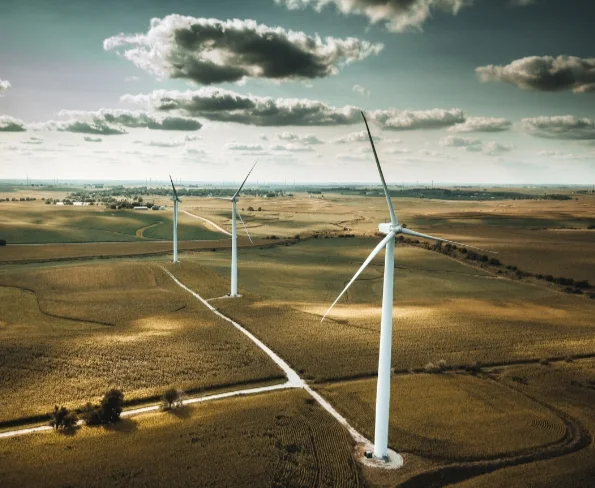America's Windswept Frontier: A Journey Through the US Wind Farm Landscape
From the Great Plains to the California coast, the American landscape dances with the rhythm of wind.
Harnessing this natural resource, the United States has emerged as a global leader in wind energy production, boasting the second-largest installed capacity worldwide. Let's embark on a wind-powered journey, exploring the statistics, key projects, and future prospects of this dynamic sector.
A Statistical Snapshot:
- Installed Capacity: As of 2023, the US boasts a formidable 131 gigawatts (GW) of installed wind power capacity, powering millions of homes and businesses across the nation. This translates to generating roughly 341 terawatt-hours (TWh) of electricity annually, a significant contribution to the national grid.
- Growth Trajectory: The US wind power sector is experiencing stable growth, averaging 8.4% annual increase in installed capacity over the past decade. This translates to adding roughly 11 GW of new wind power capacity every year, contributing to a more diverse and sustainable energy mix.
- Geographic Distribution: Wind farms are strategically dispersed across the country, with the Great Plains emerging as a wind power hub due to its consistent and strong wind resources. Other notable regions include Texas, California, and the Midwest.
Landmark Projects:
- Alta Wind Energy Center: Nestled in California's Tehachapi Pass, this project holds the title of the largest onshore wind farm in the US, with a whopping 1,320 MW capacity. Its 588 turbines stretch across rugged mountain terrain, harnessing the region's potent wind resources.
- Block Island Wind Farm: This pioneering project, located off the coast of Rhode Island, stands as the first commercial offshore wind farm in the US. Its six turbines, each boasting a 6 MW capacity, pave the way for future offshore wind development in the country.
- PrairieWinds Wind Farm: Situated across parts of Kansas and Oklahoma, this massive project spans several counties and boasts a capacity of 1,714 MW. Its over 800 turbines generate clean energy for hundreds of thousands of homes, showcasing the potential of wind farms in supporting large-scale power needs.
Looking Ahead:
The US wind power sector is poised for continued growth, aiming to reach 300 GW of installed capacity by 2050. This ambitious goal requires sustained investment, technological advancements, and policy support. With increasing focus on clean energy transition and climate change mitigation, wind power stands as a vital pillar in the US's sustainable future.
To shed light on the US wind farm landscape, here are two data tables
Table 1: Top 5 States by Installed Wind Power Capacity (as of 2023):
| State | Installed Capacity (GW) | Percentage of National Total |
|---|---|---|
| Texas | 28.9 | 22.2% |
| Iowa | 10.5 | 8.0% |
| Oklahoma | 9.8 | 7.5% |
| Kansas | 7.4 | 5.7% |
| California | 6.2 | 4.7% |
Table 2: Projected Wind Power Capacity Growth in the US:
| Year | Installed Capacity (GW) | Projected Annual Increase (%) |
|---|---|---|
| 2025 | 150 | 7.1% |
| 2030 | 200 | 6.7% |
| 2035 | 250 | 5.0% |
| 2040 | 275 | 2.5% |
| 2050 | 300 | 1.0% |
The Road Ahead:
The US wind energy sector faces challenges including grid integration, transmission infrastructure limitations, and community concerns. However, innovative solutions, policy advancements, and public engagement offer promising opportunities. By navigating these challenges and capitalizing on its vast wind resources, the US can solidify its position as a global wind power leader, contributing to a cleaner and more sustainable future.



